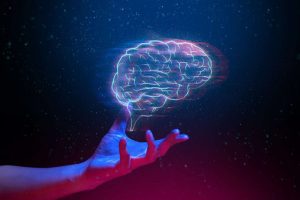AI and Climate Change: A Double-Edged Sword
Introduction
Hello, I’m Jane Doe, a seasoned blog writer and an avid follower of the latest developments in artificial intelligence (AI). I have a keen interest in how AI can help us tackle the most pressing issue of our time: climate change.
Climate change is a complex and multifaceted problem that requires urgent and coordinated action from all stakeholders. AI can be a powerful ally in this endeavor, as it can offer innovative solutions for reducing greenhouse gas emissions, enhancing renewable energy sources, improving climate modeling and forecasting, and supporting adaptation and resilience measures.
However, AI is not a silver bullet. It also poses significant challenges and risks for climate change mitigation and adaptation. AI can have a large environmental footprint, consume vast amounts of energy and resources, generate harmful waste and emissions, and exacerbate existing inequalities and vulnerabilities. Moreover, AI can be misused or abused for malicious purposes, such as manipulating public opinion, disrupting critical infrastructure, or launching cyberattacks.
Therefore, it is crucial to understand both the opportunities and the challenges of AI for climate change, and to adopt a balanced and responsible approach that maximizes the benefits and minimizes the harms of AI. In this article, I will explore some of the key aspects of this double-edged sword, and offer some practical advice on how to harness AI for good while avoiding the pitfalls.

AI Opportunities for Climate Change Mitigation and Adaptation
AI can offer many opportunities for addressing climate change, both in terms of mitigation and adaptation. Here are some of the main areas where AI can make a positive impact:
Reducing Greenhouse Gas Emissions
AI can help reduce greenhouse gas emissions by optimizing energy efficiency, enhancing carbon capture and storage, and promoting behavioral change. For example, AI can:
- Monitor and control energy consumption and demand in buildings, industries, and transportation systems, and suggest optimal ways to save energy and reduce waste.
- Analyze and optimize the design, operation, and maintenance of renewable energy sources, such as solar, wind, and hydro power, and improve their integration into the grid.
- Detect and quantify carbon emissions from various sources, such as factories, power plants, and vehicles, and provide feedback and incentives for reducing them.
- Track and verify the implementation and impact of climate policies and commitments, such as the Paris Agreement, and ensure transparency and accountability.
- Educate and engage citizens and consumers on the causes and consequences of climate change, and motivate them to adopt more sustainable lifestyles and behaviors.

Improving Climate Modeling and Forecasting
AI can help improve climate modeling and forecasting by processing and analyzing large and complex datasets, and generating more accurate and reliable predictions and scenarios. For example, AI can:
- Enhance the quality and resolution of climate data and observations, such as satellite imagery, weather stations, and sensors, and fill in the gaps and uncertainties in the data.
- Develop and refine climate models and simulations, such as general circulation models, regional climate models, and earth system models, and improve their performance and scalability.
- Provide more precise and timely forecasts and warnings of extreme weather events, such as hurricanes, floods, droughts, and heat waves, and enable better preparedness and response.
- Assess and project the impacts and risks of climate change on various sectors and regions, such as agriculture, health, water, and biodiversity, and support decision-making and planning.
Supporting Adaptation and Resilience Measures
AI can help support adaptation and resilience measures by providing and facilitating solutions for coping with and recovering from the effects of climate change. For example, AI can:
- Identify and prioritize the most vulnerable and exposed populations and ecosystems, and design and implement tailored and context-specific adaptation strategies and interventions.
- Enhance the capacity and coordination of humanitarian and disaster relief organizations, and improve the delivery and distribution of aid and resources.
- Enable and empower local communities and stakeholders to participate and collaborate in the adaptation process, and leverage their knowledge and experience.
- Foster innovation and creativity in developing and deploying new technologies and practices that can increase the resilience and sustainability of human and natural systems.
AI Challenges and Risks for Climate Change Mitigation and Adaptation
AI can also pose significant challenges and risks for climate change mitigation and adaptation, both in terms of environmental and social impacts. Here are some of the main issues that need to be addressed:
Environmental Footprint of AI
AI can have a large environmental footprint, as it can consume vast amounts of energy and resources, generate harmful waste and emissions, and contribute to the degradation and depletion of natural capital. For example, AI can:
- Require huge amounts of computing power and data storage, which can increase the demand and consumption of electricity and fossil fuels, and result in more greenhouse gas emissions and air pollution.
- Depend on rare and critical materials, such as cobalt, lithium, and platinum, which can have negative impacts on the extraction, processing, and disposal of these resources, and cause environmental damage and conflicts.
- Produce electronic waste and toxic substances, such as lead, mercury, and cadmium, which can pose health and safety hazards and contaminate the soil and water.
- Disrupt and displace natural habitats and ecosystems, such as forests, wetlands, and coral reefs, and reduce their biodiversity and resilience.
Social Impacts of AI
AI can also have social impacts, as it can affect the rights, well-being, and opportunities of individuals and groups, and exacerbate existing inequalities and vulnerabilities. For example, AI can:
- Create and widen digital divides and gaps, as not everyone has equal access to and benefit from AI technologies and services, and some may be left behind or excluded.
- Pose ethical and moral dilemmas and challenges, as AI may not always align with or respect human values and norms, and may raise questions of fairness, accountability, and transparency.
- Threaten privacy and security, as AI may collect and use personal and sensitive data without consent or oversight, and may be vulnerable to hacking and manipulation.
- Impact employment and livelihoods, as AI may automate and replace human labor and skills, and may disrupt and transform existing industries and sectors.
Malicious Use and Abuse of AI
AI can also be maliciously used and abused, as it can be exploited for harmful or destructive purposes, and pose threats to peace and stability. For example, AI can:
- Manipulate public opinion and information, as AI can generate and disseminate fake or misleading news, images, and videos, and influence the beliefs and behaviors of people and groups.
- Disrupt critical infrastructure and systems, as AI can interfere with and sabotage the functioning and operation of essential services and networks, such as energy, water, and communication.
- Launch cyberattacks and warfare, as AI can attack and damage the security and integrity of digital and physical assets and targets, such as data, devices, and facilities.
- Develop and deploy lethal autonomous weapons, as AI can enable and enhance the capabilities and effects of military and non-state actors, and increase the risk of violence and conflict.

How to Harness AI for Good While Avoiding the Pitfalls
Given the double-edged nature of AI for climate change, it is imperative to adopt a balanced and responsible approach that maximizes the benefits and minimizes the harms of AI. Here are some of the key steps and actions that can help achieve this goal:
Develop and Implement AI Policies and Regulations
AI policies and regulations are essential for ensuring that AI is developed and used in a safe, ethical, and sustainable manner, and that it contributes to the common good and public interest. AI policies and regulations should:
- Define and enforce clear and consistent standards and rules for the design, development, deployment, and evaluation of AI systems and applications, and ensure their compliance and accountability.
- Promote and protect the rights, interests, and values of all stakeholders, especially the most vulnerable and marginalized groups, and ensure their participation and representation in the AI governance process.
- Address and mitigate the potential negative impacts and risks of AI on the environment and society, and provide mechanisms and remedies for prevention and redress.
- Foster and facilitate the cooperation and coordination among different actors and sectors, such as governments, businesses, academia, civil society, and international organizations, and encourage the sharing of best practices and lessons learned.
Enhance the Education and Awareness of AI
Education and awareness of AI are crucial for increasing the understanding and appreciation of AI among the general public and the specific users and beneficiaries of AI, and for empowering them to make informed and responsible choices and actions. Education and awareness of AI should:
- Provide and improve the access to and quality of AI education and training, and equip people with the necessary skills and competencies to use and benefit from AI, and to participate and contribute to the AI development and innovation process.
- Raise and improve the awareness and literacy of AI among the general public and the specific users and beneficiaries of AI, and inform them of the opportunities and challenges, benefits and risks, and rights and responsibilities of AI.
- Stimulate and support the curiosity and creativity of AI among the general public and the specific users and beneficiaries of AI, and inspire them to explore and experiment with AI, and to discover and apply its potential for good.
- Engage and involve the general public and the specific users and beneficiaries of AI in the AI dialogue and debate, and solicit their feedback and input on the AI issues and topics that matter to them.
Advance the Research and Innovation of AI
Research and innovation of AI are vital for advancing the knowledge and practice of AI, and for enhancing its quality and impact for climate change mitigation and adaptation. Research and innovation of AI should:
- Explore and develop new and emerging AI technologies and applications that can offer novel and effective solutions for addressing climate change, and that can overcome the limitations and challenges of existing AI systems and methods.
- Evaluate and improve the performance and reliability of AI systems and applications for climate change, and ensure their validity, robustness, and scalability.
- Assess and monitor the environmental and social impacts and risks of AI systems and applications for climate change, and identify and implement measures to reduce and mitigate them.
- Foster and facilitate the collaboration and exchange among different disciplines and domains, such as computer science, engineering, natural sciences, social sciences, and humanities, and leverage their complementary expertise and perspectives.
Conclusion
AI is a double-edged sword for climate change. It can offer many opportunities for mitigating and adapting to climate change, but it can also pose significant challenges and risks for the environment and society. Therefore, it is essential to adopt a balanced and responsible approach that maximizes the benefits and minimizes the harms of AI. This requires developing and implementing AI policies and regulations, enhancing the education and awareness of AI, and advancing the research and innovation of AI. By doing so, we can harness AI for good while avoiding the pitfalls, and make a positive difference for the planet and its people.











